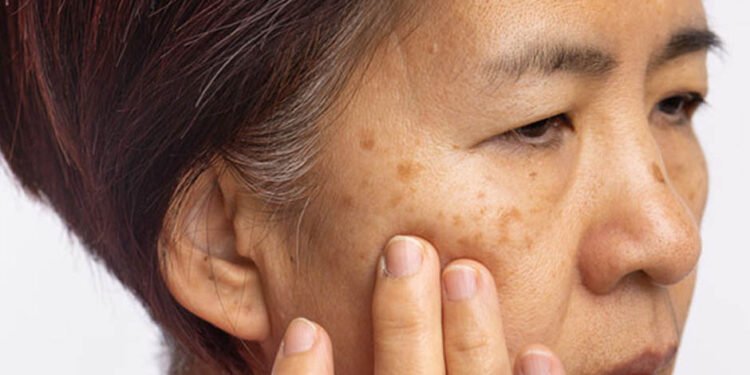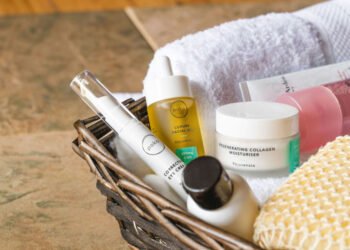Managing melasma can be complex, but various treatment options are available for those managing the skin condition. While melasma has no cure, many see improvements in the skin discoloration. In fact, the bulk of long-term gains is often due to well-executed treatment at home. However, accidental ingredient combinations can have results lacking or worse, reactions inciting worsening hyperpigmentation.
To enjoy the best results from your melasma treatment, it’s important to understand ingredient effectiveness and their purpose. Dig into the science behind these powerful treatments to learn how to improve your melasma for brighter, more even skin.
1. Cycle High-Performing Prescriptions
The hormone-induced discoloration of melasma requires prescription support to see the best benefits. One of the best-studied and most effective melasma treatments available is hydroquinone. Users of hydroquinone see brighter complexions, an improvement in the appearance of dark spots, and a reduction in uneven pigmentation.
This prescription cream is applied topically morning and night for three to six-month cycles. This cycling helps reduce the chance of irritation, as melasma-prone skin is more sensitive. Discuss the appropriate treatment usage length with your provider to determine what will work best for your melasma.
Azelaic acid, a prescription gel that reduces dark spots and discoloration, can be prescribed alongside hydroquinone. This is also an effective treatment for those cycling off hydroquinone, so your melasma treatment doesn’t have to slow down. If you’re using them both together, do so at night initially, to reduce the risk of irritation. They can cause increased photosensitivity, so it’s important to wear sunscreen when using melasma treatments.
2. Deploy Vitamin C to Soothe and Restore from the Inside and Out
Vitamin C, the well-known health-boosting vitamin you may associate with wellness, deserves a spot in your melasma routine, too. In serum form, vitamin C protects skin from sun exposure, a known irritant for melasma. It also brightens skin, reduces inflammation, and promotes collagen production, improving the look and feel of your skin.
As a brightening agent, it can help reduce existing discoloration and prevent new dark spots from appearing. It helps fade hyperpigmentation, dark spots, and uneven skin tone by inhibiting the production of melanin, the pigment responsible for skin color. It can result in a more even and radiant complexion.
Vitamin C is safe to use with hydroquinone and azelaic acid, but shouldn’t be used with retinol, as it could cause irritation. Look for formulas in droppers or narrow-tipped tubes, which prevent unnecessary oxidation, which renders the treatment less effective.
3. Improve Cell Turnover With Melasma-Friendly Exfoliants
Cell turnover, or the cycling of new cell growth, is key to a healthy glow. For those with melasma, this process is critical to bringing fresh cells forward and fading discoloration. Physical exfoliants can work, but too much abrasion can be damaging.
For at-home treatment, chemical exfoliants designed for melasma-prone skin can boost turnover safely. Retinoids like tretinoin cream, a vitamin A-derived cream, gently exfoliate the skin and encourage new cell generation. Available in varying concentrations, this prescription cream can start low and increase, reducing the risk of irritation.
Maximize the effectiveness of retinol by combining it with azelaic acid, which can enhance overall results. Apply at night, as retinoids are photo-sensitive, allowing the product to sink in before applying other treatments. Follow up with a safe-to-combine moisturizer like one with hyaluronic acid to further nourish fresh, new skin.
4. Protect Sensitive Skin from Sun Damage
No matter what melasma treatments you choose, sunscreen should always be incorporated. However, not all sunscreens are created equal, and some types may worsen melasma symptoms. One such worsening type is chemical sunscreens, which allow heat to absorb into the skin. This additional heat can irritate melasma and bring on further discoloration. Plus, some chemical ingredients can interact with your well-curated treatments.
Opt for physical sunscreens instead, like those using mineral or zinc as a sun protection factor. These sit on top of the skin, stopping ultraviolet rays from absorbing into the skin. Heat triggers melasma, so blocking it entirely helps you stay ahead of new flare-ups. Tinted moisturizers provide a one-two punch for those with melasma, providing visible coverage in addition to sun protection.
Apply physical sunscreen daily as a final skincare step before cosmetics, which is safe to pair with treatments. Blue light emitted from devices may also irritate, so don’t skip sunscreen even when you plan to be inside. Protect your skin and the investment you’ve made into treating your melasma from light-related triggers with physical sunscreens.
Treat Your Melasma with an Ingredient Mix That Works
Designing the perfect melasma treatment cocktail may be the key to improving your skin condition. While there isn’t one combination that works for everyone, there is one that will work best for you. Explore these effective ingredients, testing a small area of the skin before applying them everywhere. Follow your prescriber’s recommendations for interactions, especially if you’re taking other medications, too.
Take medication cycling seriously, too, as over-application and long-term use of treatment can reverse your progress. Turn to gentle, nourishing ingredients while taking a break from certain prescriptions, which will prepare your skin for future treatment. Keep a melasma treatment calendar, tracking your treatment, progress, and next steps. When you do, you’ll be able to determine your ideal ingredient mix as you reveal brighter, more even skin.












